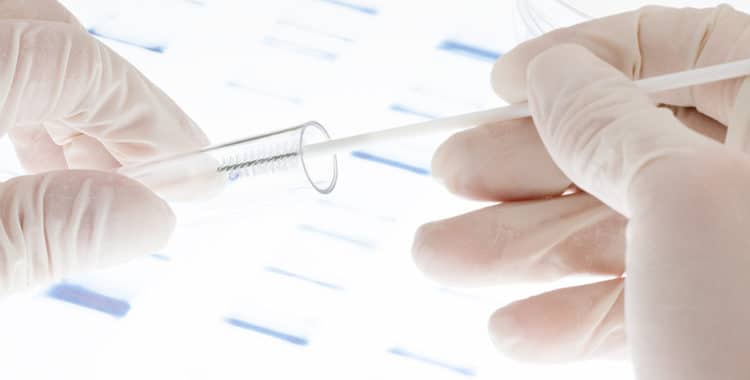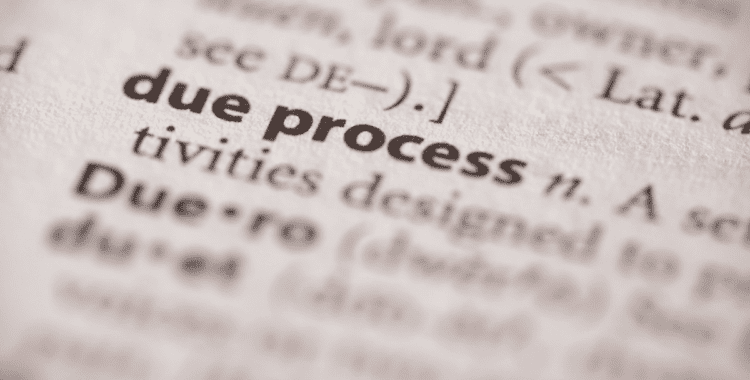DNA’s Gold Standard Begins to Tarnish
The forensic gold standard that is DNA has begun to show signs of tarnishing. Once believed to be infallible, the shortcomings and potential errors inherent in testing ever smaller quantities of DNA have begun to show up in criminal cases throughout Washington and the country.
In 2009, the National Academy of Sciences published a report on forensic sciences. While the report was quite critical of many of the “scientific” evidence being routinely used in courtrooms all over Washington and the country, they did place DNA analysis in a separate category. The report stated that “[w]ith the exception of nuclear DNA analysis, …no forensic method has been rigorously shown to have the capacity to consistently, and with a high degree of certainty, demonstrate a connection between evidence and a specific individual or source.” National Research Council. Strengthening Forensic Science in the United States: A Path Forward. The National Academies Press. Washington D.C. (2009), page 7.
DNA analysis was held up the gold standard in the forensic sciences. The innocence project has utilized DNA testing to exonerate numbers of falsely convicted people. DNA evidence has become so entrenched that many juries expect to see it in every case; sometimes even holding it against the State when they don’t present any.
As the use of DNA evidence has grown, the techniques used to analyze biological samples has evolved allowing smaller and smaller sample sizes to be analyzed. This ability to examine smaller and smaller samples, however, comes at the expense of the reliability of the results. What was once a reliable, scientifically valid source of evidence now is prone to error.
The Atlantic highlighted this shift recently in an article which highlighted the tragic conviction of Josiah Sutton. Mr. Sutton was convicted of raping a woman in Houston. The woman had reported to police that two young men had abducted her from a parking lot in her Ford Expedition and taken turns sexually assaulting her as they drove around. The assailants were unknown to her but several days after the assault she saw Josiah Sutton and another man walking down the street. She flagged down a nearby officer and reported that they were the two men that assaulted her.
Despite both men having alibis, and neither matching the physical profile of the victim’s original description, Sutton was convicted. The jury was presented with DNA evidence that concluded a match between Mr. Sutton’s DNA profile with a profile found in the vaginal swabs taken from the victim following the assault.
People share 99.9% of their genes with other people. Its only in a small fractional percentage of the DNA where people have unique differences. Those variations are represented as what are called alleles. Alleles are represented as two numbers. They are genetic markers you have from your parents; one from your mother and one from your father. The best way to know if two profiles match is to look at the alleles at as many locations on the DNA strand as possible. The standard for most labs now is 13.
A straightforward case of DNA comparison involves comparing the known DNA profile of a suspect with an unknown profile created from biological evidence collected during the investigation of the crime. When the sample contains biological material from only one person the comparison is quite easy and leads to reliable odds that if a match is found the odds of two unrelated people matching at all the alleles at 13 locations are astronomically high.
However, if the sample contains material from more than one person the comparison becomes increasingly more difficult. That is because the numbers of alleles double with two people, triples with three, and so on, and so on. The analyst must determine how many contributors are present and then try to determine which alleles belong to which contributor. The simple side by side comparison becomes something more akin to a subjective art form. The subjective choices of the analysts about which alleles to include in the calculation will dramatically alter the results and can led to inaccurate conclusions.
Analyzing smaller and smaller samples also frustrates accurate results. The smaller the sample the poorer the profile that will be generated. Often alleles will drop out or alternatively even appear where they do not exist. Mixed samples often contain small amounts of DNA. The ability to test “trace” amounts of DNA left by a suspect touching an object has led to the analysis of smaller and more minute amounts of biological evidence.
In this type of interpretative analysis, mistakes occur. The reliability and infallibility of DNA evidence falters. People like Josiah Sutton get convicted.
The vaginal swab presented to the jury in Mr. Sutton’s case had material from three contributors, the victim being one of them. The analysist was faced with a situation where she had to determine which alleles belonged to the victim, which to the first assailant, and which to the second assailant. Since she knew the profile of the victim she was able to subtract out the alleles that belonged to the victim. She was left with a bunch of alleles that belonged to two unknown people. Using a subjective analysis to determine which alleles belonged with which profile, she split the alleles into two profiles, one belonging to one assailant and one belonging to the other assailant. Ultimately, she determined that one profile was a match to Mr. Sutton.
However, she made one mistake. She did not reconcile the fact that Mr. Sutton’s profile did not match a semen sample taken from inside the Expedition. That unknown profile had to have been from one of the assailants. With that assailant’s profile isolated and known, the analyst should have subtracted it out from the group of alleles belonging to the two assailants. Doing so would have left only one profile. That profile would have either matched Mr. Sutton or not. When a lab finally did that after four years of Mr. Sutton’s arrest and conviction they found Mr. Sutton did not match the profile. His conviction was finally overturned. A few years after Mr. Sutton’s release a convicted felon by the name of Donnie Lamon Young confessed to raping the victim with an accomplice in her Ford Expedition.
In 2016, the President’s Council of Advisors on Science and Technology put out a report on forensic science in criminal courts. The goal was to determine what could be done to ensure the scientific validity of feature-comparison methods of scientific evidence. The report echoed a lot of the same concerns that the NAS report had about comparative forensic evidence such as bite-marks, firearm tool marks, and fingerprints. But instead of holding DNA analysis up as the gold standard it once was, the report went on to find fault with the validity of DNA analysis of complex mixtures.
The report laid blame squarely on the subjective method of determining matches. The report suggested, in the future, DNA analysis of complex mixtures should be based on objective analysis using probabilistic genotyping. To ensure the validity of this type of objective analysis, empirical evidence gained through the publication of appropriate scientific studies is required but presently lacking. In order to establish the validity, the report suggested the creation and dissemination of large collections of DNA profiles, created from known mixtures, representing varying complexity in regards to number of contributors, relationship of contributors, amounts of biological material present, and the state of the biological material contained in the sample. Only through the study of this type of control group could the foundational validity of analysis be properly tested.
Until such collections are created and studied the subjective analysis of complex DNA mixtures will continue. Hopefully reports like the PSAT have created an atmosphere where DNA matches do not go unquestioned and there are less convictions of people like Josiah Sutton.





